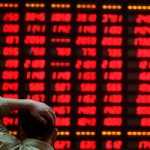Nevertheless, pressing on, and using as my benchmarks current dividend yields and dividend cover, growth of operating income and earnings over the past four difficult years, and share price trends, I have been able to compile a list of 20 international blue chips that warrant serious consideration for long-term, low-risk equity investment.
Several of my choices may surprise you…
Healthcare is a sector much liked by investment advisers because of the certainty of its growth as populations age, the range of drugs and medical technologies expands, and the exploding Asian middle class demands and is able to afford better medical care.
However the sector has not provided many encouraging investments in the developed economies, and profits face increasing political constraints.
GlaxoSmithKline is a global giant offering an excellent dividend yield with limited downside risk, but I also like AstraZeneka for its far better growth record and greater dividend cover.
Technology is another sector much favoured by analysts because of its high growth, driven by the introduction of new consumer products and software, and development of more efficient industrial and service processes.
Although the US is likely to remain the leader in software because of the depth and breadth of its human resources, and the favourable cultural environment, unfortunately nearly all the American giants in the field look too expensive for me. Somewhat reluctantly (I am no fan of the company) I reckon the safest choice is Microsoft, yielding only a tad above 2 per cent but four times covered.
In hardware, however, we can expect the Asians to continue making most of the running. I like Samsung Electronics as a long-term bet, but for its more stable earnings growth pattern and much better dividend yield I prefer the Taiwanese laptop manufacturer Acer.
The “sin stocks” have long been a favourite with defensive investors. In tobacco, my choice is British American Tobacco, and in liquor, Diageo, the world’s leading premium drinks franchise, for their scale, brand assets and international diversity. BATS gets more than half its profit in emerging economies and Diageo about a third.
In mining the obvious choice is BHP Billiton, assuming you look elsewhere for your holding in gold. It combines scale with diversity, top-class management, and the politically favourable locations of most of its production and reserves.
Consumer markets are the lowest-risk in troubled economic times, so it makes sense to invest in excellent companies that dominate through their brands and distributional skills.
My choices are Nestle, Procter & Gamble, Heinz, Kimberly-Clark and Reckitt Benckiser – all yielding around 3 per cent with good cover. Most of them already get about a third of their sales in emerging economies.
In global retailers I prefer the UK’s Tesco over the US’s Wal-Mart. It is already the world’s fourth largest and has big expansion plans in China.
My top choice of all American blue chips is the incredible McDonald’s, which gets almost two-thirds of its earnings outside the US.
I have never liked the shares of banks – their managements are far too easily lured into what longer-term amounts to high-risk speculation. With the bursting of the credit bubble, they will now be burdened for years with toxic assets, government interference, public hostility, risk aversion and sluggish credit demand.
But it’s difficult to resist the appeal of the world’s largest, the Industrial & Commercial Bank of China, with its yield of almost 3.3 per cent 2½ times covered, and an excellent earnings growth record.
Another Chinese blue chip I like is Petrochina. It is the country’s biggest oil producer, with among the largest reserves in the world relative to output. Its 3.7 per cent dividend yield is more than twice covered.
Both these giants enjoys the safety and support that comes from their four-fifths ownership by the Chinese state, with their shares listed outside China on Hong Kong, US and European bourses.
Here’s another surprise…
Real estate is a sector cursed by periods of bubbly over-development followed by crashes. That’s why the charts of property companies look like roller-coasters. For stability, consider one of Asia’s largest investment trusts, Link, with its huge and growing income from rental of its commercial and residential assets in Hong Kong.
In agriculture, an increasingly important sector of investor interest, my choice is Switzerland’s agribusiness Syngenta, developer and marketer of advanced seedstuffs and pesticides.
Telecoms is a difficult area because of over-competition, technical change and bloated “legacy” costs, but offers some useful income stocks. I like the Spanish giant Telefonica, which adds some growth to a 7 per cent yield.
I have struggled to find anything to recommend from the huge Japanese stock market. All their well-known giants offer poor yields and earnings histories. A rare exception is Toshiba Plant Systems, which I like despite its low dividend yield for its excellent record and “pole position” in the world of nuclear energy.
My friend David Fuller, the London analyst, recently spoke favourably about the idea of accumulating large-cap multinational US companies with covered yields of at least 3½ per cent. Trouble is, they are hard to find, especially if you want a track record of decent earnings growth! My portfolio of suggestions does offer an average yield of better than 3½ per cent, and with an average cover of almost 2.3 times.
Remember that this portfolio is a very defensive one designed to provide an income comparable with one from bonds, with a low level of risk from deflation, a high level of defence against inflation, and the potential to offer some growth in profits even in a period of sluggish economic activity.
There are many stocks that offer the potential of stronger growth if you are prepared to carry more risk, or are more optimistic about the outlook for the world economy than I am.
Of course, you may be suspicious of investing in quality stocks anyway, as for years they have underperformed relative to the higher-risk small-caps. Why?
BLUE CHIP PROSPECTS
| Share | Sector | Div% | PE | Div. | EPS | Ticker | |
| cover | growth* | ||||||
| Acer | Electronics | 4.06 | 14.7 | 1.7 | 18% | 2353:TAI | |
| AstraZeneca | Healthcare | 4.70 | 8.8 | 2.4 | 78% | AZN:LSE | |
| British Am.Tobacco | Tobacco | 4.38 | 17.1 | 1.3 | 63% | BATS:LSE | |
| BHP Billiton | Mining | 2.77 | 13.8 | 2.6 | 32% | BLT:LSE | |
| Diageo | Liquor | 3.46 | 16.6 | 1.7 | 33% | DGE:LSE | |
| GlaxoSmithKline | Healthcare | 4.95 | 16.3 | 1.2 | 32% | GSK:LSE | |
| Heinz | Foodstuffs | 3.75 | 16.3 | 1.6 | 122% | HNZ:NYQ | |
| Ind&CommBank | Finance | 3.32 | 11.6 | 2.6 | 238% | 1398:HKG | |
| Kimberly-Clark | Consumer goods | 4.04 | 14.0 | 1.8 | 37% | KMB:NYQ | |
| Link REIT | Real estate | 4.27 | 4.8 | 4.9 | 388% | 823:HKG | |
| McDonalds | Food service | 2.94 | 17.0 | 2.0 | 103% | MCD:NYQ | |
| Microsoft | Infotech | 2.10 | 11.7 | 4.1 | 76% | MSFT:NSQ | |
| Nestle | Foodstuffs | 3.03 | 19.3 | 1.7 | 25% | NESN:VTX | |
| Petrochina | Oil | 3.74 | 11.9 | 2.2 | 7% | 857:HKG | |
| Procter & Gamble | Consumer goods | 3.16 | 17.3 | 1.8 | 34% | PG:NYQ | |
| Reckitt Benckiser | Consumer goods | 3.04 | 16.8 | 2.0 | 116% | RB:LSE | |
| Syngenta | Agriculture | 2.34 | 19.6 | 2.2 | 140% | SYNN:VTX | |
| Telefonica | Telecoms | 7.10 | 10.5 | 1.3 | 92% | TEF:MCE | |
| Tesco | Distribution | 3.02 | 14.9 | 2.2 | 47% | TSCO:LSE | |
| Toshiba Plant Systems | Capital goods | 1.37 | 13.6 | 5.4 | 203% | 1983:TYO | |
| Averages | 3.58 | 14.3 | 2.3 | 94% |
* Earnings per share growth over the past four financial years
Master strategist Jeremy Grantham suggests two possible reasons:
► The changing population profile means there are more new retirees per new worker than there used to be.
“Retirees are selling stocks to pay the bills and to buy more conservative fixed-income investments… By the time they retire, they probably own blue chips, having sold down most of their speculative stocks in the decade before retirement.”
► A second possibility, for which there is stronger circumstantial evidence, is that over the past ten years “institutions and even ultra-rich individuals have in general been increasing the share of their portfolios that is invested in private equity and hedge funds, commodities and real estate.”
Even their equity holdings have been reshaped to include more foreign equities, emerging markets and small-caps.
Hedge funds “may feel that they do not get paid to buy Coca-Cola. And private equity firms, particularly now, do not go after many of the great franchise companies.
“What is being liquidated to buy all of this new stuff? Old-fashioned blue chip US equities and US government bonds.” Bonds do get support from official Chinese buying. But blue chip stocks “are on their own, without natural offsetting buyers.”
Grantham says various factors may continue to sustain the “modest mispricing” of quality stocks, but at some point “sensible money” will be drawn to them, and the “excess return” for investing in them “could be over 40 percentage points” of average annual return. source and CopyRight OnTarget Newsletter by Martin Spring
read further – The Banking Conspiracy




